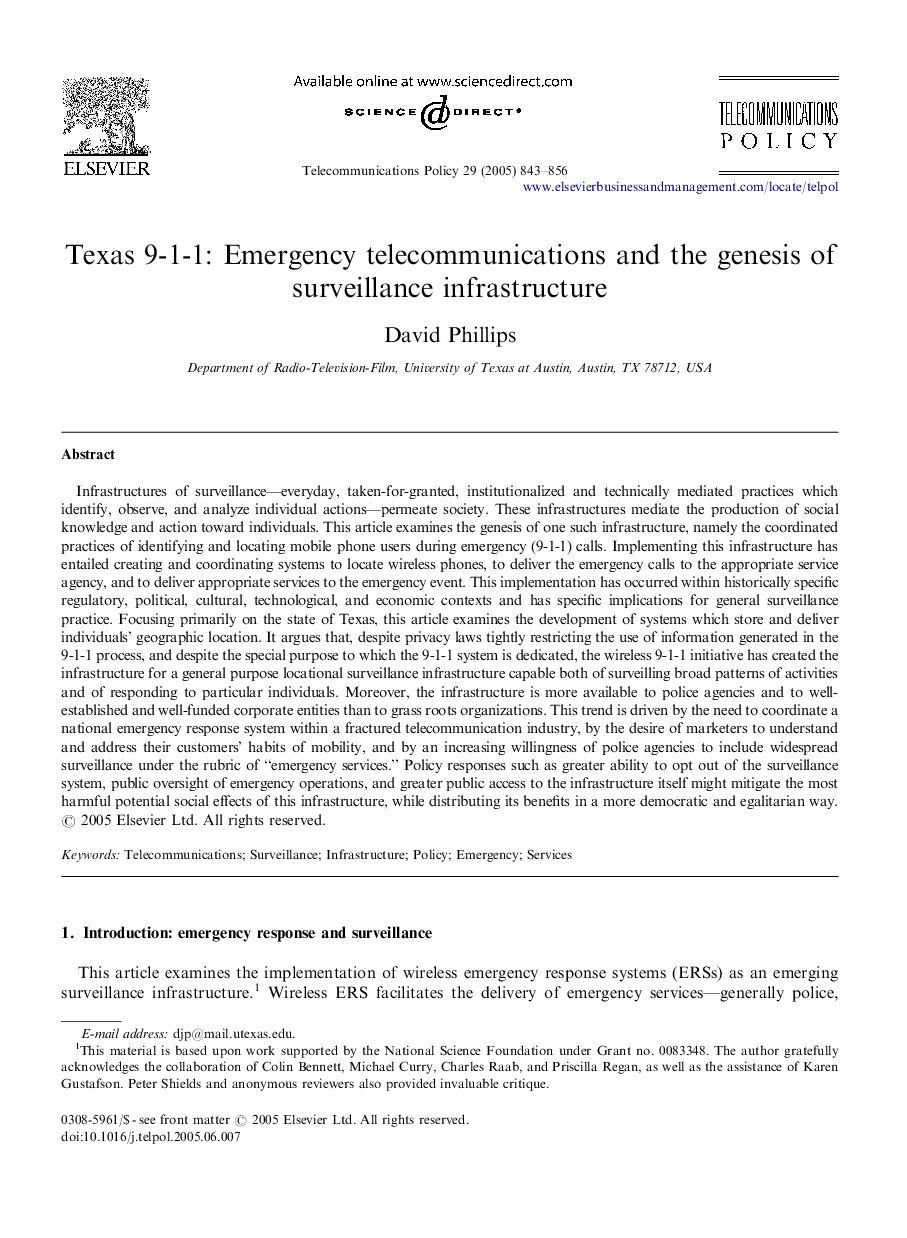| کد مقاله | کد نشریه | سال انتشار | مقاله انگلیسی | نسخه تمام متن |
|---|---|---|---|---|
| 10368390 | 874724 | 2005 | 14 صفحه PDF | دانلود رایگان |
عنوان انگلیسی مقاله ISI
Texas 9-1-1: Emergency telecommunications and the genesis of surveillance infrastructure
دانلود مقاله + سفارش ترجمه
دانلود مقاله ISI انگلیسی
رایگان برای ایرانیان
کلمات کلیدی
موضوعات مرتبط
مهندسی و علوم پایه
مهندسی کامپیوتر
سیستم های اطلاعاتی
پیش نمایش صفحه اول مقاله

چکیده انگلیسی
Infrastructures of surveillance-everyday, taken-for-granted, institutionalized and technically mediated practices which identify, observe, and analyze individual actions-permeate society. These infrastructures mediate the production of social knowledge and action toward individuals. This article examines the genesis of one such infrastructure, namely the coordinated practices of identifying and locating mobile phone users during emergency (9-1-1) calls. Implementing this infrastructure has entailed creating and coordinating systems to locate wireless phones, to deliver the emergency calls to the appropriate service agency, and to deliver appropriate services to the emergency event. This implementation has occurred within historically specific regulatory, political, cultural, technological, and economic contexts and has specific implications for general surveillance practice. Focusing primarily on the state of Texas, this article examines the development of systems which store and deliver individuals' geographic location. It argues that, despite privacy laws tightly restricting the use of information generated in the 9-1-1 process, and despite the special purpose to which the 9-1-1 system is dedicated, the wireless 9-1-1 initiative has created the infrastructure for a general purpose locational surveillance infrastructure capable both of surveilling broad patterns of activities and of responding to particular individuals. Moreover, the infrastructure is more available to police agencies and to well-established and well-funded corporate entities than to grass roots organizations. This trend is driven by the need to coordinate a national emergency response system within a fractured telecommunication industry, by the desire of marketers to understand and address their customers' habits of mobility, and by an increasing willingness of police agencies to include widespread surveillance under the rubric of “emergency services.” Policy responses such as greater ability to opt out of the surveillance system, public oversight of emergency operations, and greater public access to the infrastructure itself might mitigate the most harmful potential social effects of this infrastructure, while distributing its benefits in a more democratic and egalitarian way.
ناشر
Database: Elsevier - ScienceDirect (ساینس دایرکت)
Journal: Telecommunications Policy - Volume 29, Issue 11, December 2005, Pages 843-856
Journal: Telecommunications Policy - Volume 29, Issue 11, December 2005, Pages 843-856
نویسندگان
David Phillips,